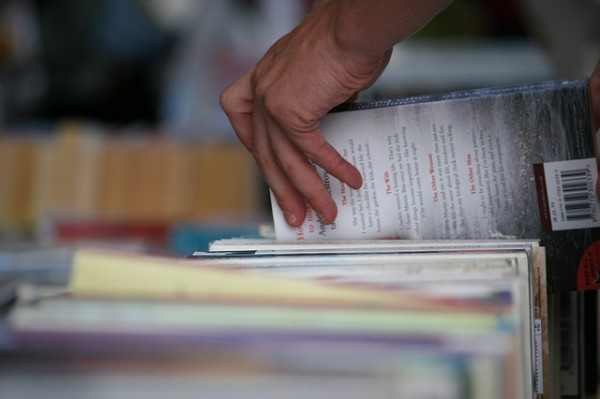How to write an effective blurb
A blurb is a short text on the back of a paperback book designed to get you to purchase that book.
Received wisdom in the publishing industry has it that the cover design triggers browsing bookshoppers to pick up a particular book from the table, after which most people will turn it over to read what’s on the back. The short text on the back cover must then arouse so much interest about the content of the book that the impulse to purchase is triggered. Many customers might glance into the book first before actually going to the checkout.
The blurb text is also used to advertise the book in some print magazines and online shopping platforms. Again, the cover is likely to determine whether the blurb text gets read, but in most cases a sale is unlikely without the blurb having done its job of persuading the prospective customer that this is the right book for them.
Films also have blurbs, which are usually placed in combination with the film poster or a film still.
A blurb is therefore a marketing text. It is not a brief synopsis of the story! The blurb is not really designed to provide information, but to create interest. So the job of the blurb is actually to give just enough information to make withholding more information effective. Not saying quite as much as the recipient wants to know is how to arouse curiosity.
What this often boils down to is answering three key questions about the story in the blurb:
- Who is the story about? What kind of person is the protagonist?
- What is the story world? What kind of setting does the story show?
- What happens to disturb the setting? What problems does the protagonist face?
These three items of information constitute the premise of a story. The disturbance of the setting may be brought about by a more or less explicitly mentioned antagonistic force. Whether the protagonist solves the problems or not is usually left unsaid in a blurb. On the contrary, the blurb poses a riddle in the hope that the potential buyer will be curious enough to want to know how the protagonist deals with the obstacles and adversity sketched in the blurb.
The genre of the story should be clearly identifiable through a blurb. Setting is often the most obvious conveyor of genre. For instance, if as part of the setting a time period is identified, a hint about the genre is conveyed too. 17thcentury France – is it a historical romance? Los Angeles in 2049 – is it a sci-fi thriller?
Just writing a paragraph that summarizes the three points above is no guarantee of an effective blurb. If you’re stuck, there are a couple of standard techniques that you can try out:
- The In a world … approach
- The What if …? approach
We have probably all heard movie trailers that begin with a husky voice-over saying “In a world …”. The sentence could go on with “… of high stakes financial trading” or “of mortal combat” or “where only the strong survive”, accompanied by exciting images. This approach is by now quite hackneyed, but adapted and used with a bit more subtlety it can still work.
Beginning with “What if …?” is actually more of a technique for developing ideas into stories than writing their blurbs. “What if a straight-laced psychiatrist suddenly has a mafia boss with guilt issues as a client?” The simple sentence conveys a lot of the possibilities for the story. The next sentence or two might even ask questions rather than answer them. “Does she break her Hippocratic oath of confidentiality and tell the police about the criminal on her couch?” Ethical questions often work well in blurbs, and if your story is built around a difficult choice for the protagonist, do try to describe it in the blurb.
An alternative word that may help to inspire an effective blurb is “imagine”. “Imagine a galaxy far, far away ruled by a merciless empire, in which an orphan farm boy by chance receives a call for help from a rebel princess …”.
Phrases like “what if” or “in a world” or “imagine” might no longer be contained in the finished draft of your blurb, after you have polished it to a T. But they might help you get it started.
Image by maryignatiadi from Pixabay
Related function in the Beemgee story development tool:
Pitch/Proposal
Develop your story now:


